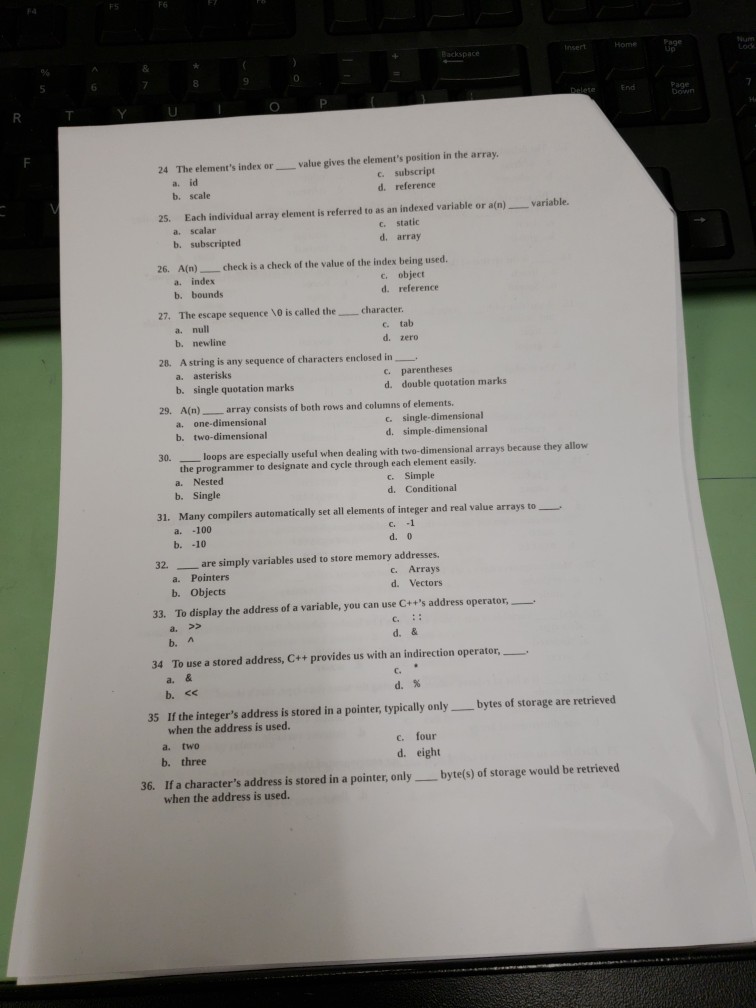Answered step by step
Verified Expert Solution
Question
1 Approved Answer
End Page 24 The element's index or value gives the element's position in the array a. id b. scale c. subscript d. reference 25. Each

End Page 24 The element's index or value gives the element's position in the array a. id b. scale c. subscript d. reference 25. Each individual array element is referred to as an indexed variable or a(n) variable. a. scalar c. static d. array 26. A(m)_ check is a check of the value of the index being used a. index b. bounds c. object d. reference 27. The escape sequence 10 is called the character a. null b. newline ctab d. zero a. asterisks b. single quotation marks c. parentheses d. double quotation marks 29. A(n)_array consists of both rows and columns of element a. one-dimensional b. two-dimensional c. single-dimensional d. simple-dimensional 30. loops are especially useful when dealing with two-dimensional arrays because they allow the programmer to designate and cycle through each element easily. a. Nested b. Single c. Simple d. Conditional 31. Many compilers automatically set all elements of integer and real value arrays to a. 100 b. -10 d. 0 32. _are simply variables used to store memory addresses. a. Pointers b. Objects To display the address of a variable, you can use C++'s address operator,_ c. Arrays d. Vectors 33. C. b. A d.& 34 To use a stored address, C++ provides us with an indirection operator, c. d, % 35 If the integer's address is stored in a pointer, typically only bytes of storage are retrieved when the address is used. a. two b. three c. four d. eight 36. If a character's address is stored in a pointer, only-_ byte(s) of storage would be retrieved when the address is used
Step by Step Solution
There are 3 Steps involved in it
Step: 1

Get Instant Access to Expert-Tailored Solutions
See step-by-step solutions with expert insights and AI powered tools for academic success
Step: 2

Step: 3

Ace Your Homework with AI
Get the answers you need in no time with our AI-driven, step-by-step assistance
Get Started


